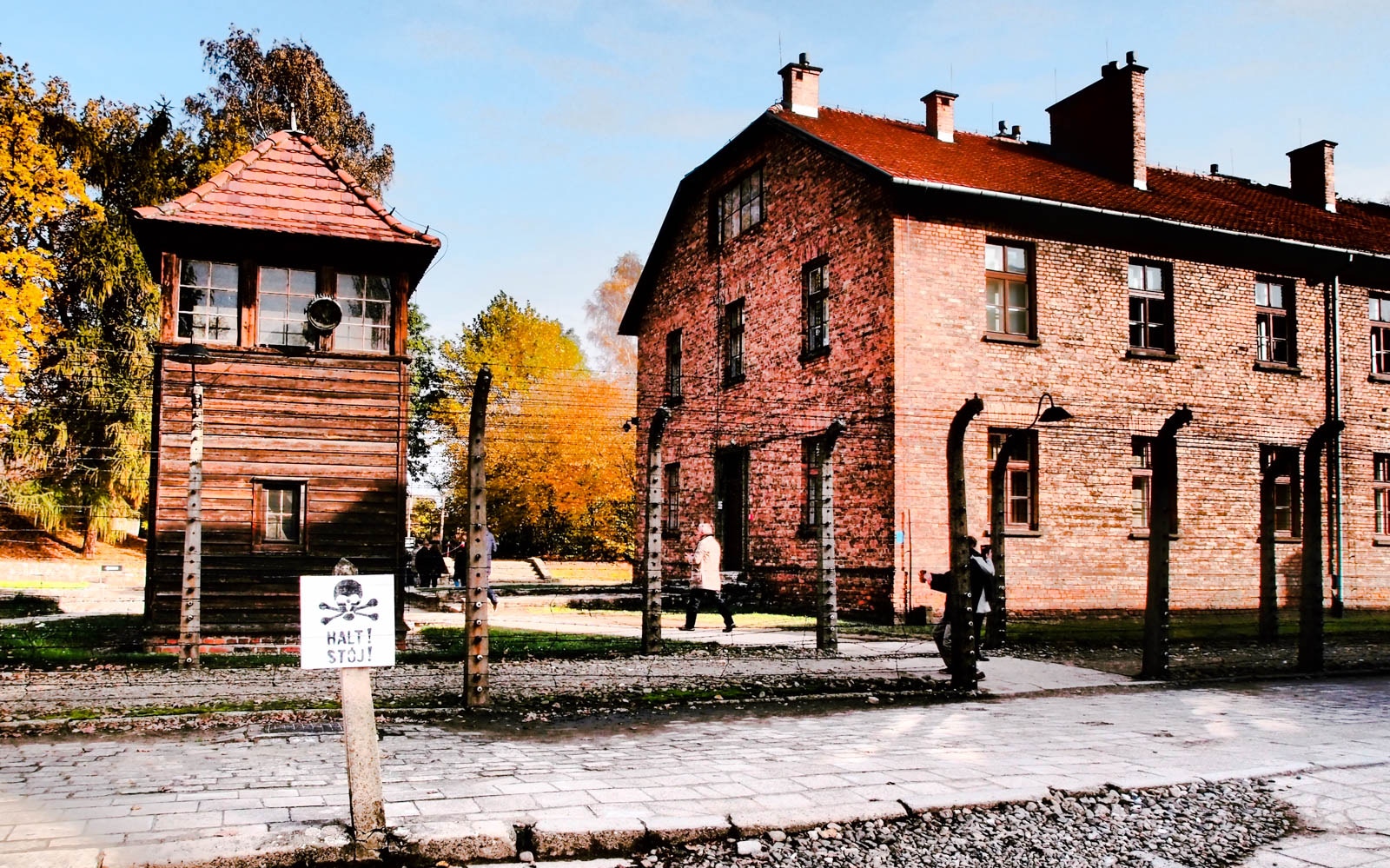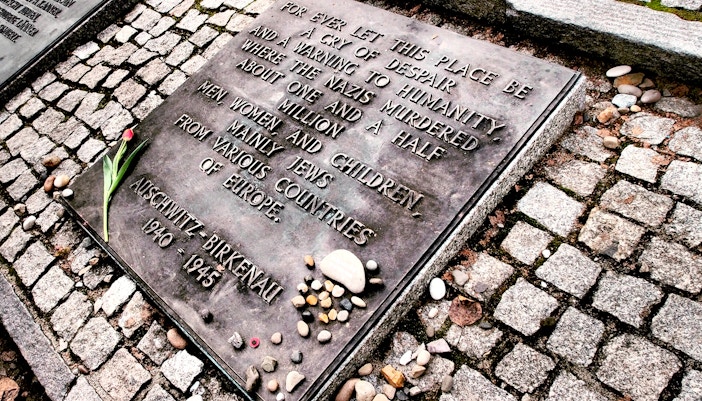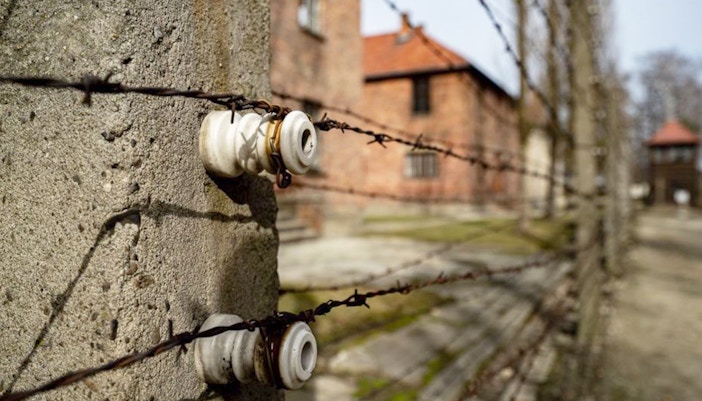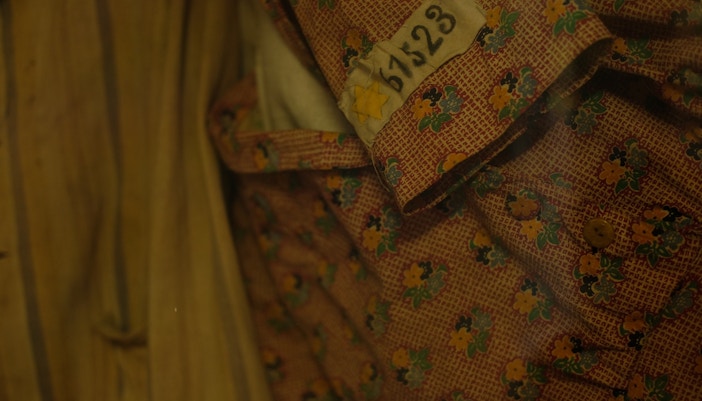Commemoration signs at Auschwitz serve as powerful reminders of the atrocities committed during the Holocaust. These signs are placed throughout the site, including at important locations like the entrance gate, with the infamous slogan "Arbeit Macht Frei" (Work Sets You Free).




































